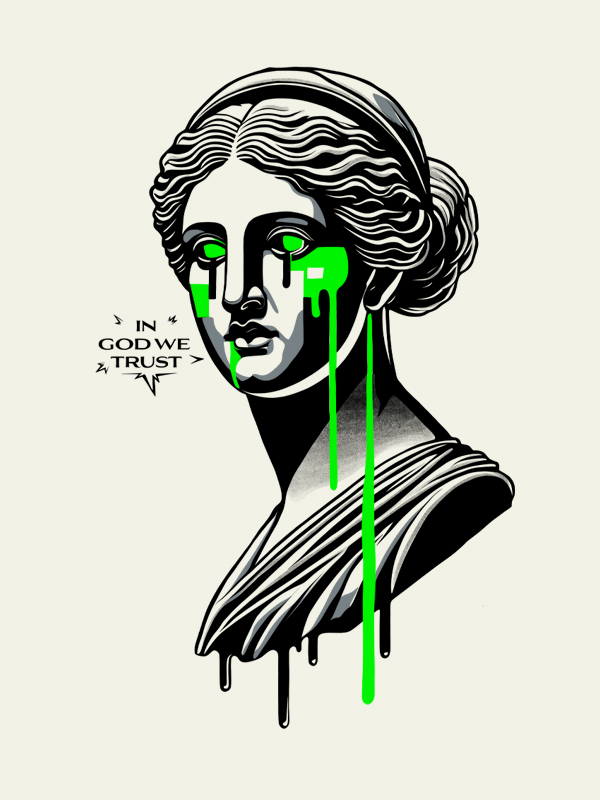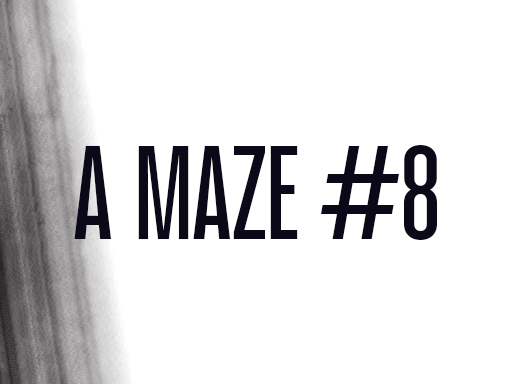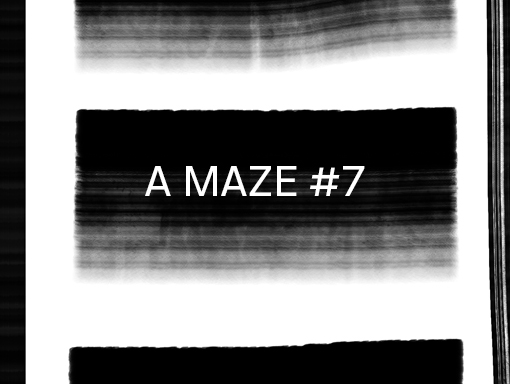
Exploring the Intersection of Mythology, Technology, and Conspiracy
As an artist, I’ve always been fascinated by the way different eras and ideologies collide, often creating an interesting tension between the past and the future. “The Glow of Eternity” is a reflection of this ongoing battle—a blend of classical mythology with a modern, almost dystopian lens. Inspired by the timeless beauty of Greek statues, specifically Aphrodite, I wanted to explore the concept of divine figures through a more contemporary, perhaps even cynical, viewpoint.
At the heart of this artwork lies the theme of the “fake god.” In a world saturated with digital information, rapid consumerism, and mass media, we are constantly exposed to images of authority, power, and divinity. Yet, how often do we question their authenticity? These figures—be they corporate icons, influencers, or political leaders—are often presented as perfect, omnipotent, or even god-like. However, behind their polished exteriors, we find flaws, manipulation, and sometimes outright deceit. This is what I wanted to highlight in “The Glow of Eternity.”
The dripping neon paint that falls from the statue’s eyes is a symbolic representation of this falsehood. It’s as if the goddess is crying—an indication that even the divine is now tainted by the digital age and the manipulation of power. The neon green hue that I used isn’t just visually striking; it represents technology, the modern gods who have replaced traditional beliefs with algorithms and advertisements. In a way, these figures become “glowing” symbols of artificial divinity, something that looks perfect from the outside but is fundamentally flawed beneath the surface.
Incorporating conspiracy theories into my work adds an additional layer of complexity. These theories are often centered around the idea that powerful organizations or individuals pull the strings behind the scenes, crafting narratives and manipulating society’s beliefs. By placing the phrase “In God We Trust” near the statue’s head, I’m subtly playing with the idea of false idols and questioning the very nature of trust. Who are we trusting? What are the true motives of those we consider powerful or divine?
Through this piece, I hope to invite viewers into a conversation about what it means to worship something, be it a god, a political leader, or a technological figure. Are we blindly following the glowing, perfect images presented to us? Or can we peel back the layers and find the truth beneath?
The juxtaposition of ancient Greek symbolism and modern conspiracy theories creates a space for reflection. It’s a critique of how technology has morphed our understanding of power, control, and belief systems. “The Glow of Eternity” doesn’t just capture a mythological goddess—it also asks, “What are we really worshiping, and why?”
In a world that constantly changes, the question of what remains eternal—what we should trust, and why—becomes more urgent than ever. This artwork serves as a reminder that everything, even the most sacred symbols, can be distorted, manipulated, and even fabricated. Yet, within this distortion, there is also the possibility of revelation and the glow of truth.


